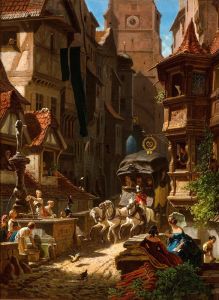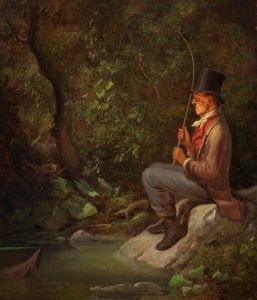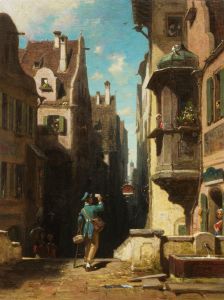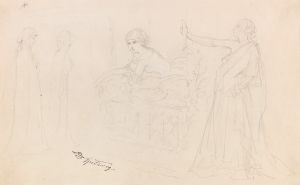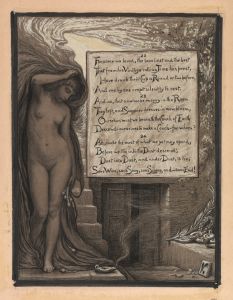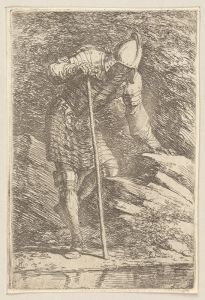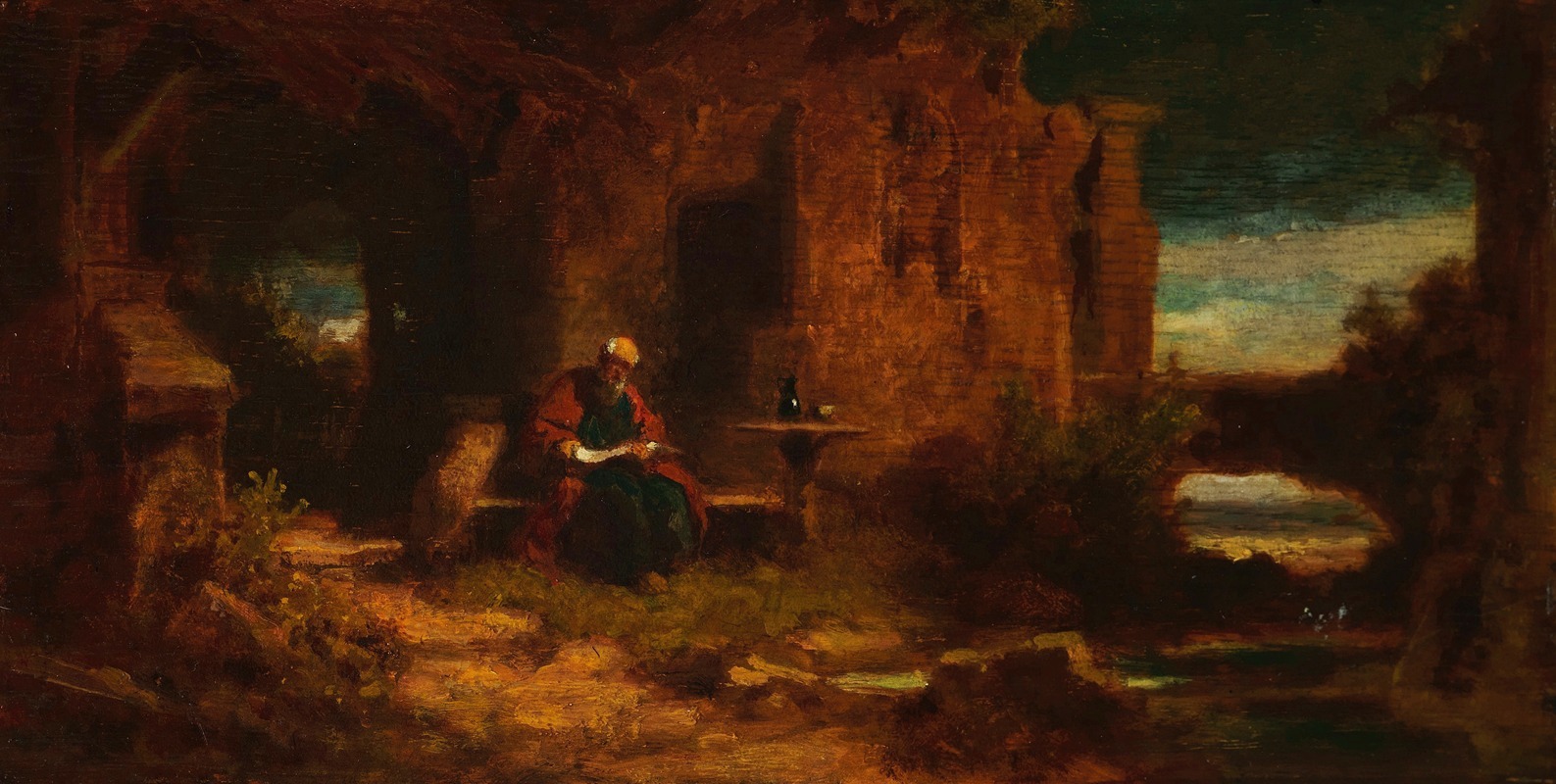
Einsiedler in der Dämmerung
A hand-painted replica of Carl Spitzweg’s masterpiece Einsiedler in der Dämmerung, meticulously crafted by professional artists to capture the true essence of the original. Each piece is created with museum-quality canvas and rare mineral pigments, carefully painted by experienced artists with delicate brushstrokes and rich, layered colors to perfectly recreate the texture of the original artwork. Unlike machine-printed reproductions, this hand-painted version brings the painting to life, infused with the artist’s emotions and skill in every stroke. Whether for personal collection or home decoration, it instantly elevates the artistic atmosphere of any space.
Carl Spitzweg's painting Einsiedler in der Dämmerung (translated as Hermit at Twilight) is a work by the renowned 19th-century German painter and poet. Spitzweg is widely celebrated for his contributions to the Biedermeier period, a cultural movement that emphasized intimate, detailed, and often sentimental depictions of everyday life. His works frequently explore themes of solitude, nature, and the quiet beauty of human existence, and Einsiedler in der Dämmerung is no exception.
The painting portrays a hermit seated in a tranquil, twilight setting, surrounded by the soft glow of the fading light. The figure of the hermit is depicted in a contemplative pose, emphasizing themes of introspection and harmony with nature. Spitzweg’s characteristic attention to detail is evident in the delicate rendering of the natural environment, including the interplay of light and shadow that captures the serene atmosphere of dusk. The scene reflects Spitzweg's ability to evoke a sense of peace and introspection, qualities that are central to much of his work.
Spitzweg often drew inspiration from Romanticism, and his paintings frequently depict solitary figures in idyllic landscapes, exploring the relationship between humans and their surroundings. Einsiedler in der Dämmerung aligns with this tradition, showcasing a solitary figure immersed in the quiet beauty of the natural world. The hermit, a recurring motif in Spitzweg's oeuvre, symbolizes a retreat from the complexities of society and a search for spiritual or intellectual fulfillment.
The exact date of creation for Einsiedler in der Dämmerung is not definitively documented, but it is consistent with Spitzweg's broader body of work, which spans the mid-19th century. Spitzweg's paintings were often small in scale, designed to be intimate and personal, and this work likely follows that tradition. His use of warm, earthy tones and meticulous brushwork enhances the painting's sense of intimacy and emotional depth.
Carl Spitzweg (1808–1885) was largely self-taught as an artist, having initially trained as a pharmacist. His transition to painting allowed him to explore his passion for art, and he became one of the most beloved painters of his time in Germany. His works, including Einsiedler in der Dämmerung, continue to be appreciated for their charm, wit, and ability to capture the quiet moments of life.
Further details about the provenance or current location of Einsiedler in der Dämmerung are not readily available in public records. However, Spitzweg's works are widely held in both private collections and major museums, including the Neue Pinakothek in Munich, which houses many of his most famous paintings.








